#native american recipes
Photo
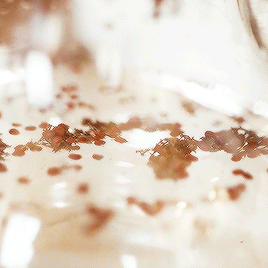



sumac lemonade.
#foodedit#food#food gifs#foodcore#recipes#mine#gifs#sumac lemonade#sumac#drinks#native american cuisine#native american recipes#indigenous american cuisine#indigenous american recipes
64 notes
·
View notes
Text

#Thanksgiving#november#turkey day#Thanksgiving recipes#ndn#native#n8v#native American#colonialism#colonizers#leftist#lgbt#capitalism#racism#imperialism
324 notes
·
View notes
Text
“The question led Barton to scholars like David Morgan and Kristen Gremillion, and obscure discoveries in places like Kentucky’s Red River Gorge, a 29,000-acre canyon system in the Daniel Boone National Forest.
Before the Gorge finds, archaeologists “assumed that the peoples of this region just sat around passively, waiting for others to send them the gift of agriculture,” says Morgan, director of the National Park Service’s Southeast Archaeological Center. “But that simply wasn’t the case.”
Plant materials recovered by archaeologists in the Gorge in the 1980s and ‘90s led to a historical revision “that fundamentally alters how we think about indigenous peoples of the [precontact eastern U.S.],” says Morgan. A trove of ancient seeds debunked then-dominant theories “depicting early inhabitants as backwater nomads that didn’t acquire agriculture—and thus the markers of complex society—until after A.D. 1, when maize arrived from Mesoamerica.”
Gremillion, a paleoethnobotanist, chairs the Ohio State University department of anthropology and is the author of Ancestral Appetites: Foods in Prehistory. She started working in the Gorge around 1989, using techniques such as direct radiocarbon dating and high-magnification microscopy to study ancient caches of seeds, food stores, cooking refuse, and human feces. She found specimens buried under massive stone outcroppings and in caves—all in remarkable condition.
“We found things like 3,000-year-old sunflower heads and baskets full of seeds,” says Gremillion, who compares the digs to opening storage vaults. The finds were unprecedented, and old vanguard archaeologists were dismissive. “They said the materials couldn’t possibly be so old.”
Gremillion’s research proved them wrong; the region’s indigenous peoples had been farming for more than 5,000 years. The work helped establish the Eastern Woodlands as an independent center of prehistoric plant domestication and agricultural development—alongside areas like southeast Asia, Mexico, and the Fertile Crescent.”
#appalachia#cherokee#cuisine#ancestral appetite#Kristen gremillion#atlas obscura#nico albert#taelor barton#native american#cooking#recipes#pre contact
200 notes
·
View notes
Text

Navajo Fry Bread
11 notes
·
View notes
Text
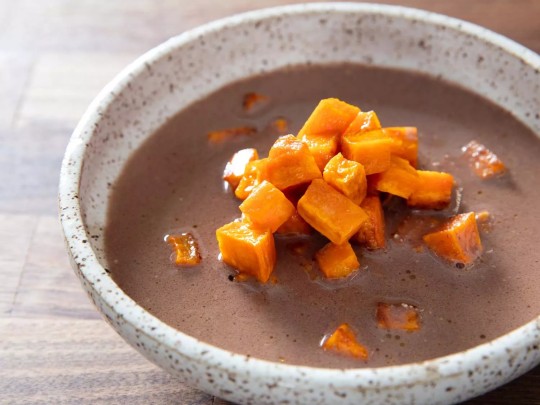
Kanuchi (Vegan Cherokee Pureed Nut Soup)
#vegan#soups#american cuisine#native american cuisine#hickory nuts#hickory#wild foods#maple syrup#hominy#sweet potatoes#if you do decide on making any of today's recipes be sure you forage/source sustainably or not at all#Also be 150% sure in your identifications 💕
27 notes
·
View notes
Text
ALL i want. all i am asking for is a field guide with the native names of the plants. i think this should exist so bad i will compile it myself so help me god
#and pictures!!!!!!! and recipes!!! and cultural history of the plants maybe!!!#augh#i think that foraging is a really good way to become aware of and connected to the plants and land around you#but it is WEIRD that every american foraging book has literally no information about native cultural uses of plants#i think the names need to be in there!!! at fucking LEAST T_T#i dont like the weird frontiersman conqueror of the wilderness energy i get from most foraging books it is WEIRD#that they just carry on describing how to use it but nothing about how it Has Been Used and loved etc its BIZARRE#its a little freaky!!!!
35 notes
·
View notes
Photo
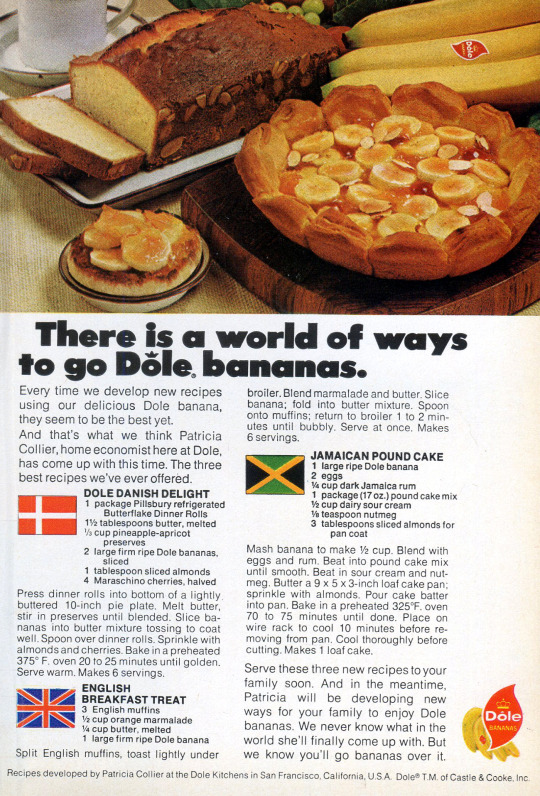
I don’t find these recipes all the a-peeling.
Reader's Digest November 1974
#vintage ad#native american#advertising#advertisment#1965#bananas#dole#recipes#fruit#1970s#1970s ad#1970's#1970's ad#funny#humor#humour
18 notes
·
View notes
Text
Made Chickasaw Indian Molasses Bread today (it’s very good and very simple, check it out) and made my own grape juice as step one for our tribes Iconic grape dumplings.
For the juice, you can buy grape juice or just get really small, dark grapes and boil them. Then you strain out the skins + remaining fruit flesh. It’s really delicious! I recommend trying it even if you don’t want grape dumplings.
14 notes
·
View notes
Text
I would say that the United States, as of right now, has three main food groups (aside from junk food) and those are, Italian, Mexican, and Chinese. All of which have been Americanized here to some extent but differently in different parts of the country. I find this very funny because I have heard people from Italy be indignant about what we’ve done with the stuff (and about good restaurants too!) like, sorry if you guys weren’t creative, mixing things up a bit is great. “What about (regionally popular food)?!” I know we all have those, I haven’t heard of bitches in the south eating lefse, but that’s not my point! What was my point actually? I think I was going to say that, even if we bastardize stuff a lot, I’m super glad we have, as a country, agreed that more seasoning is good. Because if this place had been like “fuck immigrant food forever, we are eating British style” I think I would die.
This country has historically treated immigrants like shit, but we do tend to cave eventually and go like “actually,
your food is really good” a kind of shallow prize I guess, but I’m glad we actually start doing it eventually because I WILL mock British food and I WILL be sad that the only good family recipes my family has from before immigrating are all desserts. Don’t get me wrong, I love sweets, but I’m pretty sure there is a reason we stopped making other stuff
Wait, I re-read this today and realized I sound like my family is British. We are not. What even are British desserts? I bet they don’t have enough cardamom. Although lefse doesn’t have cardamom and i like a lot of things without it, my point is that their holiday and special event foods probably don’t have enough! Which wouldn’t surprise me tbh because apparently the only place that went crazy for the stuff outside of where it originated seems to have been Scandinavia for some reason. At least some maps I looked at seemed to suggest it. Which rocked me to my core
#emma posts#and I know that there are Native American foods that were really here first#but the three most popular quisenes (idk how to spell that) on a country wide scale#are those three#and also. I’ve seen a few Italian recipes from Italy and you guys don’t always use enough seasoning#I don’t care if that’s insulting#foods should have depth if they are going to be good#and I think people (at least around here) rely too heavily on cheese#even aside from the vegan thing. since i have diversified my diet more I am like#cheese is not a substitute for other flavors#this is my hot food take#my take on hot foods though is that I thought I couldn’t handle hot spiciness but then#I heard about British people reacting and also ate with older people here and was like ‘oh my god. that’s so sad’#my mom thinks udon is too spicy :(#i hope this doesn’t come across wrong but this IS the bad reading comprehension website#going to a local Scandinavia festival and admiring the arts and the sweets and then they start talking about other cultural foods and I’m#just like ‘why would you do that to fish?’ and judging my ancestors#in THEORY I understand why. food preservation and all that. but in practice…#like I said. there is a reason dessert and bread recipes are what my family still has from before America and I’m not really mad about that#being the only food#we’ve all heard the old people talk about lutefisk and we are like ‘nope’
1 note
·
View note
Photo
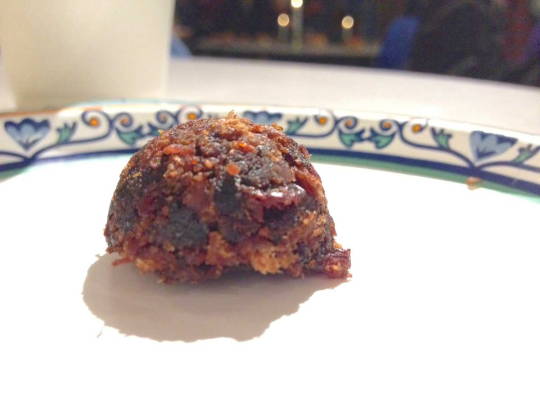
Pemmican
Though the name comes from the Cree Nation, many Native Americans have used this classic recipe to keep their energy up on long journeys.
Ingredients:
4 cups lean meat
3 cups dried fruit
2 cups rendered fat
Unsalted nuts
Dash of honey
Instructions:
Lean meat can be deer, beef, caribou or moose. Spread whichever you have available out on a cookie sheet and dry in the oven at 180 °F for at least eight hours, or until crispy. Once it's cooled, pound it into a powder-like consistency and grind the dry fruit.
Heat the rendered fat until it becomes a liquid, then pour over the dried meat and fruit and mix in the nuts and honey as well. Mix and slice into portions, then store in a cool, dry place.
5 notes
·
View notes
Text
Sounds yummy
#cooking#indigenous#Native American cooking#native recipe#rice#🍚#native american#native#indigineous people#reservation#first nations#native tribe#paiute#tribal#tribe#rez#native america#native american history#nevada native#northern paiute#reservation dogs#colorado native#decolonize#history#nevada#recipe#cook#healthy
3 notes
·
View notes
Photo

Today is the perfect time for a historic fresh vegetable side dish originally shared by Native Americans in the 1600s. Succotash
3 notes
·
View notes
Text
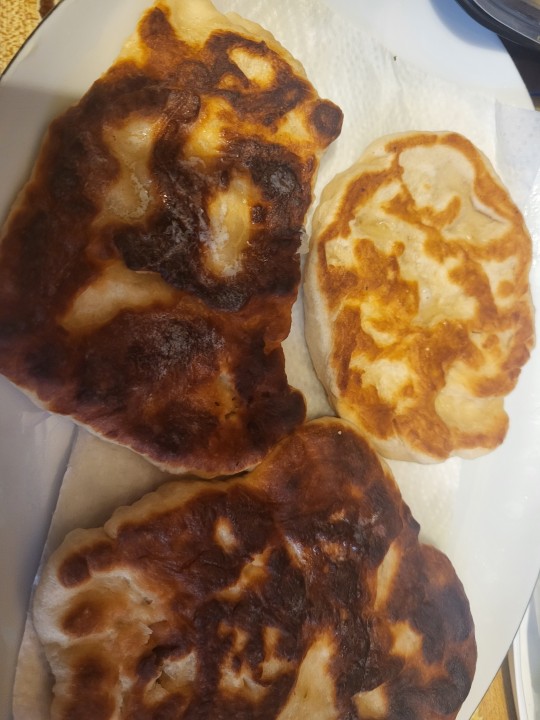
Native frybread (long-standing family recipe): made 12-3-2024
#food#comfort food#ex chef#cooking#ex culinary major#culinary#cook#baking#bakery#baker#home recipes#recipes#family recipe#ancestors#native american#native recipes
0 notes
Text
Cheesey Grits
Grits are a popular Southern dish in the United States made from coarsely ground corn, specifically hominy corn that has had the hull removed through a process called nixtamalization. The result is a coarsely ground product that can be cooked into a porridge-like consistency. Grits have their roots in Native American and Southern cuisine, and they are a versatile dish that can be served for…

View On WordPress
#grits#native american#quickandeasy#simple recipes#simplerecipes#southern#Southern Food#vegan#vegetarian#vegetarianfood
0 notes
Text

NAVAJO FRY BREAD RECIPE
17 notes
·
View notes
Video
Sean Sherman cider braised turkey thighs-Yellowstone cookbook by Jackie Alpers
Via Flickr:
The relationship of Indigenous tribes to their land is a central theme in the Yellowstone TV series and I am honored to include Sean Sherman’s recipe for Cider Braised Turkey Thighs from his James Beard award winning cookbook, The Sioux Chef's Indigenous Kitchen in The Unofficial Yellowstone Cookbook. A portion of the sales of my cookbook will be donated to NATIFS (North American Traditional Indigenous Food Systems), promoting Indigenous foodways education and access. Visit natifs.org/ to learn more and make a dontation.
#Unofficial Yellowstone Cookbook#westerns#Jackie Alpers#recipes#western food#cooking#food#food photography#The Unofficial Yellowstone Cookbook#Indigenous Food#Indigenous Foodways#Indigenous#native american food#flickr
1 note
·
View note
